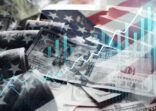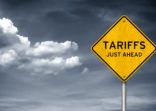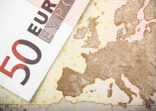The US has threatened to impose 25% tariffs on a list of $50bn worth of goods from China. The tariffs are due to come into effect on 6 July. In response to a subsequent reciprocal threat from China, US president Donald Trump threatened further tariffs on another $200bn worth of goods.
While tariffs on steel and aluminium imposed earlier affect China only marginally, the new set is designed to inflict much more economic pain.
The list of goods subject to the tariffs, published by The Office of the US Trade Representative, includes 1,333 lines. Among them is industrial equipment, such as boat motors, gas compressors, heating equipment, cranes, bulldozers. Also impacted are agriculture equipment, such as harvesters, dairy milkers, chicken incubators; medical equipment such as pacemakers; and widely used items such as industrial magnets, LEDs and lasers.
Notably, consumer products such as mobile telephones and TV sets are not included. This spares some large electronics and white-goods manufacturers in China, while targeting manufacturers of heavy equipment and certain technology sectors, such as communication technology and robotics.
Should the tariffs escalate into a trade war and cover all Chinese exports to the US, their effect on China’s GDP could amount to cutting a full percentage point from the country’s GDP growth, according to a research note from Anthony Chan, chief Asia investment strategist at Union Bancaire Privee Private Bank.
“The good news is that China has sufficient ammunition to limit and cut the downside risks, and is likely to implement a number of policy responses.”
China’s options
China buys only about one-quarter of what it sells to the US, according to Craig Botham, emerging market economist at Schroders. “Whilst the US imported just over $500bn of goods from China in 2017, China only bought $130bn from the US,” he wrote in recent commentary.
Considering the worst-case scenario of unrestrained mutual retaliation, he speculates on the steps China could pursue after it runs out of trade goods to tax.
The non-tariff options might include selling US Treasury bonds, of which China is one of the biggest holders. This would likely raise US yields and the cost of US government borrowing. “This would be a Pyrrhic victory,” Botham writes. “The subsequent downturn in the US would significantly reduce demand for Chinese imports.”
China can also opt for a more targeted campaign to make doing business in the country practically impossible for selected US companies, through arbitrary enforcement of safety and other regulations. This would force them to pull-out of the market, a tactic the authorities have employed in the past.
Botham also points out the collateral damage the tariffs would inflict on other countries, through the global supply chains, since much of the value added in products that China exports to the US is created elsewhere. Taiwan, Malaysia and Singapore are the most vulnerable, according to the firm’s analysis.
In the meantime, the tariffs have already affected the markets, noted Eric Wong, fixed income portfolio manager at Fidelity International. “We see this more [as] a sentiment-led move than one driven by economics,” he added. However, if the tariffs materialise, they will affect individual companies.
Even if the scope of the tariffs remains limited, the imposition of reciprocal tariffs “could push up input prices” for Chinese manufacturers, writes Raymond Ma, portfolio manager at Fidelity International. They could “pass on the increased costs to consumers, or allow them to eat into profits, neither outcome is favourable,” he writes.
Although trade tensions can impact earnings, especially for exporters, Lynda Zhou, portfolio manager at Fidelity International notes that “the observed disconnect between macro data and company data remains strong,” and questions the validity of macroeconomic factors as a leading indicator for microeconomic effects.
China’s policymakers “are likely to find it difficult to continue deleveraging and impose other tightening measures,” said Wong, and might even reverse the course. This would be positive for bond prices.
In a recent interview, Roger Bacon, head of investments for Asia-Pacific at Citibank, said that the bank was overweight China A-shares despite the threat of the trade war, with consumer and technology as the core investment themes.

















